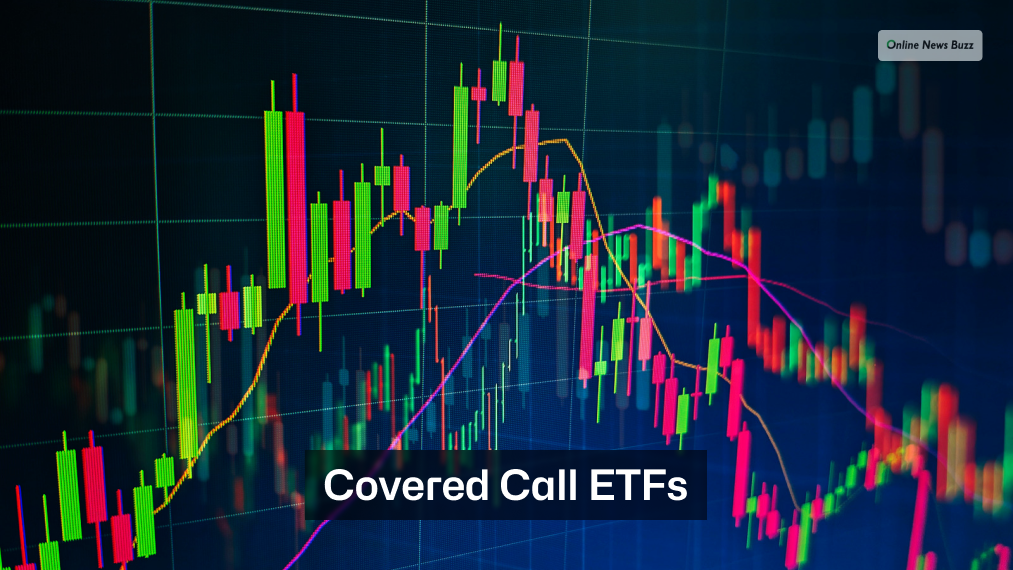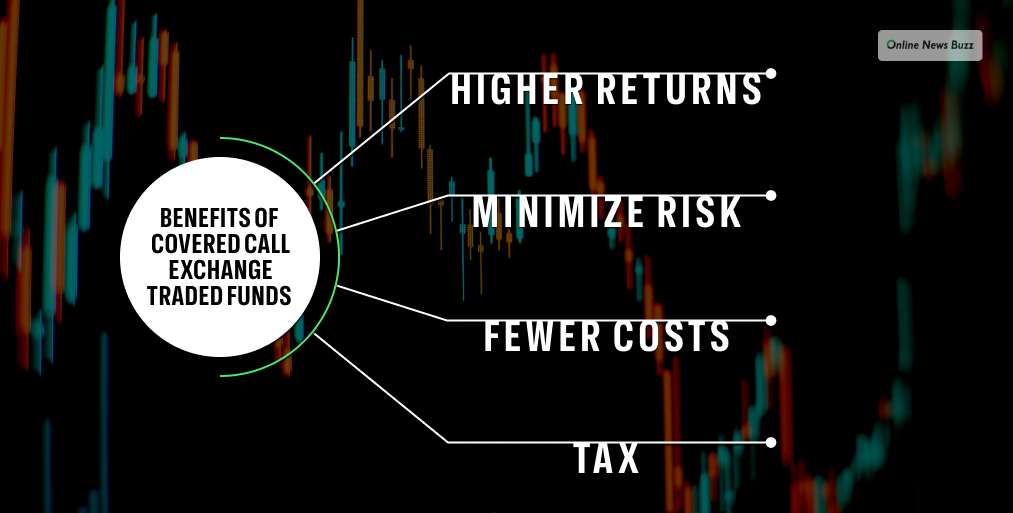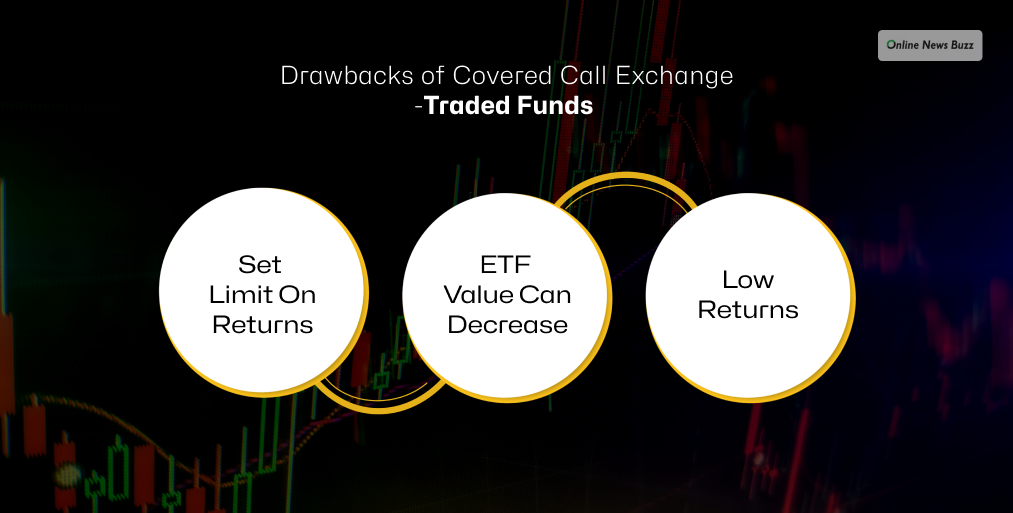
Are you looking for ways to stabilize your income from your stock market investments? Do you want to protect your investment from risks? You can protect your investment from risk if you sell call options on your ETF. Understanding the investment trends will help you minimize your investment risks.
Are you not sure what the covered call exchange-traded fund means? Then, let’s discuss the covered call option and covered call exchange-traded funds in detail. In this article, we also discuss the benefits of the covered call ETF and how it works.
What Is Covered Call?

Let’s first know what covered calls mean before we move on to covered call exchange-traded fund. A covered call is an option in trading strategy to minimize investment risks. If you already own a stock and don’t feel like the price will rise anymore for that stock, you can choose the covered call option.
Therefore, you protect your stock from future price rises or falls. Your stock valuation does not get affected because of market volatility. Additionally, you get to secure some of your investment from loss even if your returns are low when selling the call option on your stock.
Furthermore, you can choose the covered call option when you have just started to trade on the exchange. Therefore, it helps new traders lower their investment risks. If are new to investment and want to know ‘what are ETFs?’ then read this article.
If you want to learn more about different investment options in the market, then read investment books. We hope you now know what the covered call strategy is. So, let’s learn what covered call ETFs are.
What Is Covered Call ETF?

Exchange-traded funds or ETFs are funds you can purchase on the exchange, like individual stocks. These funds hold assets whose price rises, resulting in the price rise of the ETF. Similarly, a covered call ETF is a fund you can invest on the exchange but with the covered call option.
Therefore, the exchange-traded fund purchases shares in companies and sells the call options of those shares. So, the ETF earns extra income or premium through selling the covered call option. You also get to own the underlying ETF shares unless a call option is exercised.
Additionally, when you choose the call option, you secure your investment from future fluctuation in the price of the shares. Furthermore, you can limit your tradeoffs when investing in covered call exchange-traded funds. So, when the price of the assets or stocks under the ETF increases, the ETF must sell at the option’s strike price.
Furthermore, when you invest in ETFs, you can avoid the process of buying shares. Additionally, you can avoid opting for the selling option and choosing a strike price for your shares. You can leave these processes to the fund managers choosing the call ETFs.
How Does Covered Call ETF Work?

So, how do the covered call exchange-traded funds work? If you have this question on your mind, then let’s answer it in simple terms. Just like you purchase shares of securities as ETFs on the exchange, you can also buy covered call ETFs. These funds consist of assets with call options that share your purchase.
Additionally, you must bear the expense ratio on purchasing the call ETF, just like any ETF. Furthermore, you purchase call ETFs to diversify your portfolio and protect them against future risks.
When you purchase call ETFs, your fund managers employ the covered call strategy on the fund. Therefore, you do not need to worry about selling a call option to secure your investment from future market fluctuations.
Additionally, your fund managers purchase different companies’ shares and sell the covered call option in return for premiums. You earn regular income from these premiums when selling the shares call options. This regular income is known as dividend income.
When you sell a covered call option of share, you reduce the fund’s price volatility in case of a fall in the fund’s assets. Additionally, you minimize the loss of your investments because you enjoy premiums on the call option sale.
The Schwab U.S. Dividend Equity ETF (SCHD) and Schwab U.S. REIT ETF (SCHH) are paying dividends of 3.5% annually to its investors.
Drawback When Stock Price Increases
However, when you sell the call option, you limit the upside of your trading. So, when your share price increases above the strike price, you get lower returns. Since you set a cap on your share price, you don’t enjoy the increase in share prices in the market.
Robert Johnson says that the covered call option is forgoing some upside in exchange along with additional current income. Furthermore, setting a cap price on your specific fund amount can offer benefits from long–term appreciation of your fund’s securities.
At the same time, it might look like a loss when the share price increases in the market above the strike price on the call option; however, you still avoid loss.
So, investing covered call ETF can help minimize your loss in the volatile investment market.
Benefits Of Covered Call Exchange Traded Funds

Now, consider why you should invest in call ETFs and how it benefits you. Since the stock market is volatile, you must find ways to minimize your investment losses, which is what call strategy provides.
Higher Returns
If you want to get high returns on your investment in ETF, invest in covered call ETF. You get regular income in the form of dividends and get to safeguard your investment from major losses.
Additionally, you need not worry about selling call options of your share when your fund managers have taken care of the process.
If you want to get higher returns on other ETFs then gold ETF and crypto ETF are great options for you.
Minimize Risk
Suppose you have purchased a stock on an exchange, and suddenly, the stock price drops, and you suffer a major loss. We know this is the last scenario you wish to see yourself in. So, instead, you must choose to invest in something that safeguards your investment from a sudden price drop.
This is where the call ETF comes in. You can earn a premium income as a dividend on your ETF securities and their sale of the covered call option. Additionally, you can own the ETF and sell it to get further returns if the covered call option is not exercised.
Furthermore, you get returns on your call ETF and minimize the risk of potential market price loss of your fund’s assets. The best covered call ETF is the Global X Nasdaq 100 Covered Call ETF (QYLD) with 11.64% distribution yield.
Fewer Costs
When you invest in a covered call ETF, you bear fewer fees compared to selling a covered call option on a stock. Here, you need to set a price cap for your call option and then sell the covered call option.
Additionally, you must go through the process of selling call options, which you can avoid when owning a call ETF. According to Professor Robert Johnson, “With a covered call ETF, the stock purchase, portfolio management and call writing decisions are left to a professional.”3
Furthermore, you don’t have to monitor the different exchanges regularly.
Tax
You will be taxed on your cash flow from covered call ETFs, but it is not taxed if you choose the covered call option on your stocks. You might consider this a preferential treatment because the premium you get from selling the call option isn’t taxed. So, applying this call option on your own can increase your returns from investment.
Drawbacks of Covered Call Exchange-Traded Funds

There are advantages to choosing ETFs, but there are also some disadvantages or drawbacks. So, let’s know what these drawbacks are when choosing a call ETF.
Set Limit On Returns
When you sell a covered call option on your ETF, you put a price cap on your ETF and get the premium. So, if the assets or stock prices under the fund increase, your ETF prices also increase.
However, you don’t benefit from them because you own the covered call ETF. Additionally, since you already set a price cap on your ETF and sold its call option, you cannot get the excess profits because of the rise in ETF valuation.
This can be a major drawback when you own covered call exchange-traded funds.
ETF Value Can Decrease
If you get a premium from selling your covered call option on your ETF, and your ETF price falls, you must bear losses. No one can predict the exchange and the rise and fall in securities values. Therefore, people choose to sell call options on their ETFs.
However, if you want to take risks and increase your investment, use other investment options like ETF or mutual funds.
Low Returns
You will get higher returns when you invest in ETF, mutual funds, stocks, and bonds than owning a covered call ETF. If you want to know which investment option is better for you, ETF or mutual fund, read this article on ETF vs Mutual Fund.
So, if you want to secure your investments for market fluctuations, only purchase covered calls, such as ETF. Additionally, if you think there is a chance that your ETF securities’ value will fall, then selling the call option is the best way to balance out your losses.
Wrapping Up
Remember that investing in the market is a game of loss and gain. So, you should always research before investing in stocks, mutual funds, or ETFs. Do you want to take a risk and increase your investment? Then, covered call ETF might not be the best choice for you.
However, if you don’t want to risk your investment too much, then ETFs are a great option. Know your preference and investment aim before you start your investment in the exchange.
Read Also:




























